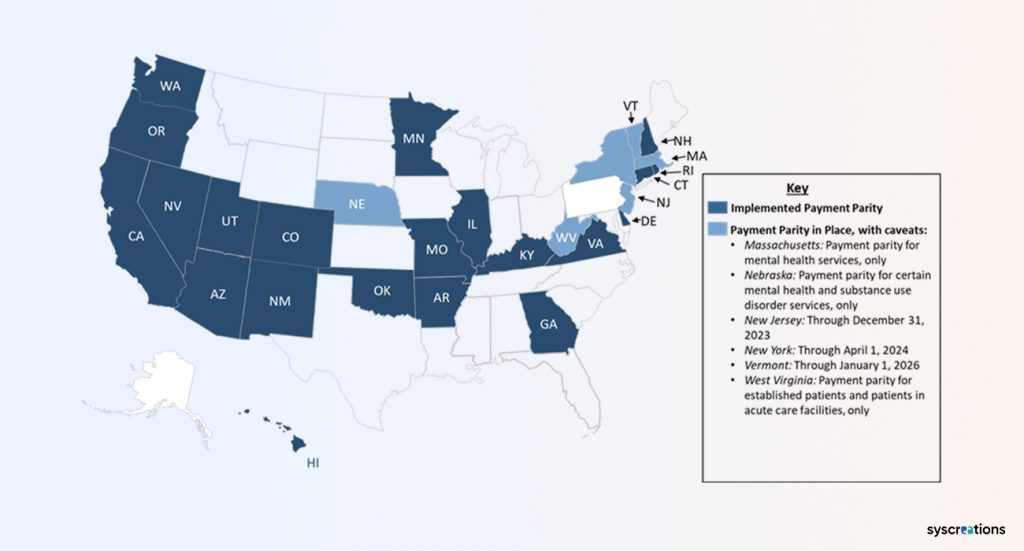Payers, providers, and the state government are looking for ways to expand telehealth services in the United States.
Telehealth is a fundamental tool to ensure patients’ access to healthcare requirements.
Recently, the government has introduced quite some regulations related to telehealth services. We’ve gathered all the vital data for you to get everything in a post.
In this blog, we’ll discuss new developments in telehealth services at the state and federal levels.
Recent Federal Developments
Women’s Health Protection Act of 2023 (S.701) was introduced in the Senate on 8th March 2023. It was placed under Read the First Time on the Senate Legislative Calendar.
It was read the second time on 9th March 2023. It has progressed and was placed under General Orders on the Senate Legislative Calendar.
The proposed law, referred to as a “bill,” aims to prevent any restrictions on the ability of healthcare providers to offer telemedicine-based abortion services, as well as any limitations on a patient’s ability to receive these services, that are not imposed on other similar medical services offered via telemedicine.
In simpler terms, if this bill becomes law, healthcare providers would be allowed to provide telemedicine-based abortion services without facing any unique limitations or restrictions that do not apply to other comparable medical services provided through telemedicine.
Recent State-Level Developments
Several states have taken action recently in the wake of new covid-19 cases linked with the different variants.
In many states, the flexibility of using telehealth facilities is used as a temporary fixture for emergency declarations.
Permanent State Laws and Statutes for Payment Parity
Payment parity is a policy that requires healthcare providers to receive the same amount of reimbursement for telehealth visits as they would for in-person visits.
A doctor or other health care provider who provides a telehealth consultation or service would receive the same payment as they would if they had provided the same service in person.
During the COVID-19 pandemic, many states in the US implemented temporary payment parity policies in response to the increased use of telehealth due to lockdowns and social distancing measures.
As of March 2023, some states have implemented payment parity permanently.
21 states have implemented policies requiring payment parity, meaning that providers must be reimbursed the same amount for telehealth and in-person visits.
Six states have payment parity policies in place but with some limitations or exceptions, while 23 states have no payment parity policies at all.

Deliver Quality Virtual Care Anywhere with Our Customizable Telemedicine App
Thank you for investing your time to read about our customizable telemedicine app, designed to be HIPAA-compliant.
We’re passionate about helping healthcare professionals and entrepreneurs deliver better care for all, and we’d love to work with you to create a solution that meets your unique needs.
Please connect with us today to learn more about our range of solutions and how we can help you streamline healthcare delivery and improve patient outcomes.
We look forward to the opportunity to work with you to create a great product together.



